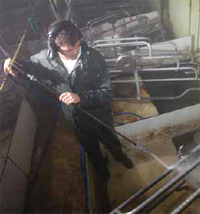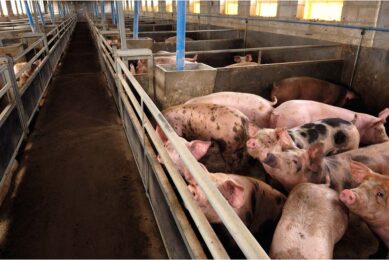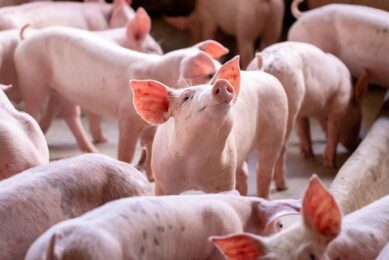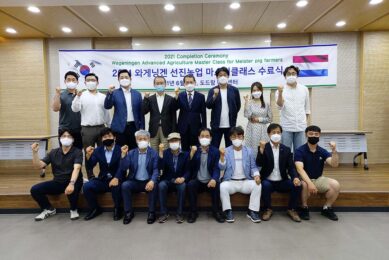PCVAD: Top tier management and nutrition are still vital

The arrival of vaccines for treating PCVAD should not take attention away from top class management and nutrition. Improved management has already been seen to be very successful in keeping this disease under control. And more recent research shows that elements of nutrition can play an important role too.
By Michelle Sprent, SCA NuTec, Dalton, North Yorkshire, UK
Post Weaning Multisystemic Wasting Syndrome (PMWS), later replaced by the more general name Porcine
Circovirus Associated Disease (PCVAD) has been causing problems for pig producers around the world for nearly 20 years. It was first seen in Canada back in 1991 and then gradually moved across the globe hitting the UK in 1998/1999.
The peak of the PCVAD problems occurred in the UK in 2003 and there was a three year period before any vaccines were commercially available. A review of the disease by BPEX (British Pig Executive) showed that the levels of mortality seen in the weaner/growing pig were beginning to come under control between the peak of the epidemic in 2003 and the introduction of the sow vaccine in 2006. Much of this progress was the result of management techniques employed by producers. And the UK was not unique here. Other countries witnessed the same trend in mortality where improved management protocols were followed. This is a lesson for those countries now affected by PCVAD, and for those like the UK where it is under control as they are a good basis for improving herd productivity and efficiency.Following the Madec principles formed the core of management techniques that would help to control PCVAD. Because of the complexity of the disease and the lack of answers from extensive studies, coupled with the frustration of the French producers who were suffering such high losses, Dr Francois Madec and his team put together a 20 point plan to go some way towards helping the French producers. This plan quickly became known in other markets including the UK and it proved to be the best means of control in light of a lack of a vaccination programme.
The plan gives guidelines for all aspects of management from arrival of new stock through weaner management to departure of stock from the unit. Just looking at one aspect – cleaning protocols – work in Denmark highlights the significance of the recommendations.
The Danish trial looked at the effects of different cleaning on pig performance and reiterates the importance of the cleaning protocol in general disease control. Results are shown in Table 1. Remember that many of the problems of PCVAD are linked to secondary infections so control of these was and still is essential in the control of PCVAD.
Focus on feeding
Little attention was paid to feeding of the young pig in the Madec principles. But ensuring adequate feed intake of good quality feeds in the early stages post-weaning is critical. A pig that is not well established on a good quality feeding programme will not be able to fight a disease challenge.
In addition to conventional nutrition there are ingredients which can be added to feeds that play a role is supporting the immune system. Some of these, such as nucleotides have been tested specifically in relation to their immune response around the time of vaccination.
When a vaccine is used for a particular disease the body initiates an immune response. This involves the production of antibodies and the greater the response, the better protected the pig will be in the future.
The production of these antibodies requires cell replication to take place. Nucleotides will help this immune response by supplying the building blocks for RNA and DNA and therefore cell proliferation and replication. Figure 1 shows the effect of supplementing the feeds of newly weaned pigs with nucleotides on the level of antibody production. Vaccinated pigs which had nucleotides included in their feed exhibited a significantly higher antibody response compared to the control. The pig’s own active immune system is developing whilst they are still on the sow as well as post-weaning, assuming typical weaning ages of 25 to 28 days. So by providing the building blocks for RNA and DNA replication this process can be aided. In addition, including nucleotides will help other cell multiplication and this can have an indirect effect on health. For example, trials with newly weaned pigs receiving feed supplemented with nucleotides have shown an increase in villus height in both the duodenum and jejunum. Nutrient uptake is maximised through supporting the immature and developing gut which in turn impacts on health.
Complementing nucleotides
There are also other feed ingredients that can be used to complement nucleotides in boosting the immune system such as natural antioxidants.
All cells in the body are under constant turnover and replication. This essential process is much faster in the young growing animal or in the health challenged animal. As each cell ‘turns over’ it is under threat from many damaging influences in the body, and in particular the so-called free-radicals that are the products of the oxidation of cell fragments within body tissues. Antioxidants help to control these free radicals and prevent them causing damage to other tissues and the immune system. The balance between the processes of oxidation and the prevention of oxidation (antioxidation) is critical in controlling cell integrity and health. If the balance shifts to a high level of oxidation with little inhibition then damaged immunity and poor growth will be the ultimate result for the growing pig and especially so for the post-weaned piglet. Traditionally, vitamin E would be considered as playing a key role. However trace elements and many plant based ingredients are increasingly being found to have antioxidant properties. Some of the naturally occurring plant derived polyphenols and flavonoids are very powerful complementary antioxidants. A combination of natural antioxidants alongside vitamin E has been found to give improved health and growth benefits compared with the traditional supply of vitamin E alone. Therefore, natural antioxidant products have a role to play in helping the pig to cope with diseases such as PCVAD.
Although vaccines for PCVAD are proving to be very effective, producers had already made lots of progress with the application of the Madec management techniques coupled with specific nutrition packages. Producers should not let management slip and rely solely on vaccination. Embracing all aspects of pig management to high standards will not only help control PCVAD but it will also help defend the herd against the threat of any future diseases or epidemics that may hit the industry.
Source: Pig Progress magazine Volume 26. No. 2
Join 18,000+ subscribers
Subscribe to our newsletter to stay updated about all the need-to-know content in the pigsector, three times a week. Beheer
Beheer










 WP Admin
WP Admin  Bewerk bericht
Bewerk bericht